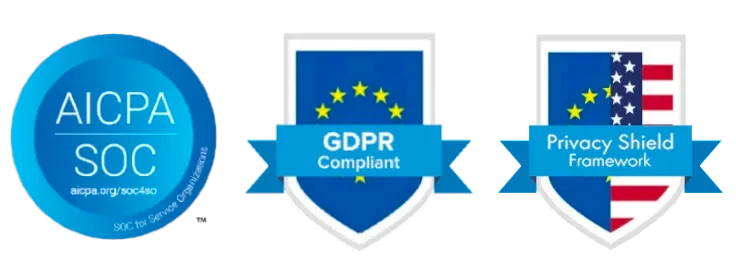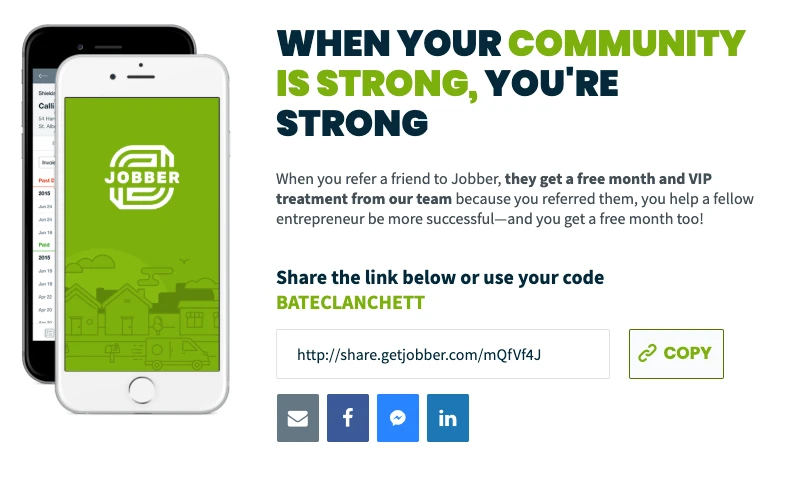A recent survey by impact.com revealed that 86 percent of consumers found recommendations and reviews important in their purchase decisions, while 2 percent considered traditional ads important. You may be keen to tap into this unique channel, with referral marketing having so much growth potential.
As a marketer, securing approval from key decision-makers is crucial for launching word-of-mouth campaigns and leveraging external technology. How can you capture stakeholders’ attention? Start by understanding your audience.
Each team has unique needs regarding new marketing avenues. Then, articulate a carefully crafted strategy highlighting the advantages and addressing potential worries to sway the purchasing committee.
Give stakeholders the information they care about and address their concerns
There are various stakeholders from whom you need to get buy-in. How you approach these teams will differ according to what each team values most. Here’s how to present your referral marketing plan to each stakeholder.
The finance team: highlight the cost-effectiveness and potential revenue
When discussing referral marketing with the finance team, it’s essential to emphasize the cost-effectiveness and the potential revenue boosts. They might perceive the program as just another fixed cost—referral marketing doesn’t just entail the cost of new software. The program’s premise lies in rewarding participants based on their results—software costs are a minimal fraction of the overall budget.
Highlight how costs are tied directly to performance rather than being fixed—you only pay customers when they successfully refer others. Strengthen your case and share statistics showing how competitors have thrived using referral programs. Additionally, present a projection of the potential revenue a referral program could generate for your business.
A common pitfall is finance teams wanting to take control of program designs. This can be problematic as they often lack the expertise to create successful programs. As a marketer, you can guide discussions, ensuring finance focuses on the program’s performance-oriented criteria and requirements without letting them dictate the structure.
The technology team: involve them early in the referral technology buying process
The technology team is often busy, time-constrained, and shielded from the buying process. Since this team has a lot on their plates, but you need to involve them in this project early.
Some solutions may appear impressive on the surface but need more technical robustness. For this reason, you can provide tech with access to all documentation about the proposed platform — also, schedule time for them to speak with the referral tech vendors you’re considering.
Try collaborating with your technology team to understand how they work. For example, how do they plan their work? How much notice do they need for a project? What is their overall work process?
Finding a solution that offers greater flexibility, scalability, and the ability to integrate with existing systems will help you gain support from the tech team. Not getting the tech team involved early on could have dire consequences—if a solution doesn’t fit their needs, they may refuse to use it only after you’ve purchased it. This means a big waste of company time and resources for an unusable platform.
The legal team: Let them check privacy and security requirements.

Legal doesn’t need to be involved in the buying process, but they should account for privacy and security requirements such as CCPA and GDPR compliance. A good standard is to look for third-party security features that protect your program, such as ISO 27001 or SOC 2 Type 2.

These certifications demonstrate high-security compliance, meaning your program adheres to rigorous data protection standards. Additionally, consider employing advanced fraud detection mechanisms and regular audits to maintain integrity. By integrating these measures, you’ll comply with legal requirements and foster trust among your customers—crucial for the success and longevity of your program.
General tips for approaching stakeholders: Create a compelling business case and highlight referral marketing benefits
Conduct thorough research that proves the value of referrals
Create a good business case to show why word-of-mouth marketing is a meaningful channel. Present it in a way that shows how the channel works long-term—a referral is not necessarily a heavy investment but a continuous one. Emphasize that results take time to ramp up, but the long-term gains will benefit the company.
Arm your presentation with data and case studies demonstrating the success of referral marketing in similar industries or companies.
For example, see how RealtyNinja and RingCentral powered up their marketing strategies with customer advocacy.
Build a comprehensive presentation
Use the data you’ve gathered to build a compelling case. Avoid presenting a vague or broad vision. Clearly outline specific, measurable goals and how referral marketing will achieve them.
Develop a comprehensive yet concise presentation that includes:
- An overview of referral marketing and its relevance in today’s ad-saturated environment
- An overview of the referral platform(s) you’re considering
- Detailed plans on how your team will implement the program
- Expected benefits backed by data and statistics
- Potential challenges and solutions
- A timeline and roadmap for execution
Choose a referral marketing platform that suits your brand’s needs
When selecting referral technology, there are a few key things to consider. The software should have:
- The ability to build customized and fully automated referral programs
- Security features, such as fraud protection and GDPR compliance
- The flexibility to change widgets and program rules
- The ability to create referral programs that match your brand’s look and feel
- Robust tracking and analytics capabilities to review and optimize a program’s performance
Some referral marketing benefits to include in your presentation
When pitching referral marketing, focus on the tangible benefits to show how referrals drive growth:
- Increased revenue and customer acquisition: At impact.com/advocate, we’ve seen that the referral channel could generate as much as 20 percent of a brand’s revenue per year.
- Builds trust with new customers: 88 percent of consumers worldwide trust recommendations from their community. When a current customer refers someone, their trust in your business gets transferred to potential customers, boosting your brand’s credibility.
- Scalable and sustainable: Referral programs can scale as your business expands, ensuring sustained growth.
- Cost-effective growth: Acquiring customers through referrals is more cost-effective than traditional advertising since you’re tapping into existing networks instead of finding new ones.
- Enhanced customer loyalty: Referred customers are likelier to make repeat purchases, boosting lifetime value. For example, Jobber’s referred customers have an 18 percent higher average selling price than non-referred customers.

Win over the referral marketing buying committee with research, data, and a robust referral platform
Understanding the needs of different stakeholders, such as the finance, technology, and legal teams, will help you create a compelling argument for implementing a referral program and supporting technology.
Start with thorough research and create a detailed presentation backed by data and the benefits of the referral channel. Also, choosing a flexible and scalable external referral platform will help stakeholders see how easy the process is with technology.
Who knows—maybe executing a successful referral strategy will get you that promotion you’ve been waiting for!
Ready to learn more about referral marketing? Check out these resources:







